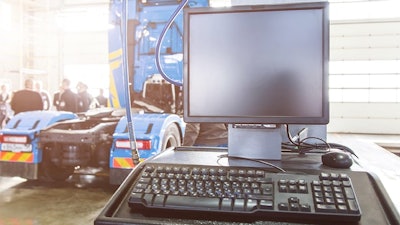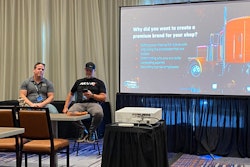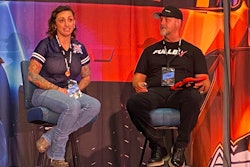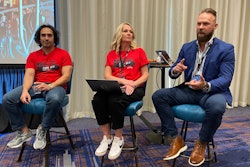
Trucks, Parts, Service readers support right to repair. At least that’s the consensus from a recent poll on our website.
During a multi-week period in March, TPS asked readers who visited our site more than twice in the prior month if they supported H.R. 906, the ‘Right to Equitable and Professional Auto Industry Repair Act’ or the REPAIR Act. Multi-visit readers were presented the question to ensure respondents were active TPS readers.
Among those who engaged with the poll, the answer was overwhelmingly (79%) yes. It’s also not far off (but slightly below) where voters have landed on the question of right to repair in state referendums in Massachusetts and Maine over the past dozen years.
[RELATED: Industry associations share views for and against the REPAIR Act]
The right-to-repair battle in the automotive and commercial vehicle markets is far from over, and both sides believe there are strong reasons for why it should come out on top. But when the topic is put to a vote, there’s little debate. Vehicle owners believe access to technical and service information should not be limited.
The heavy-duty right to repair memorandum of understanding (MOU) that was agreed upon in 2015 still stands and can be used by vehicle owners and independent service providers. The MOU was a big win for the independent aftermarket when it was finalized, but in the passing years has proven insufficient due to a lack of clarity around vehicle telematics.
Original proponents of the MOU support its expansion but recognize the document is not legally binding, which is why much of their attention has since shifted toward legislation. The REPAIR Act, which has 52 co-sponsors (26 Republicans, 26 Democrats), is seen as their best path forward.
“We feel that MOU was a great stride in the right direction, however, it’s time to codify this into law,” says Commercial Vehicle Solutions Network (CVSN) Director of Operations Kristen Kellogg, who was part of a delegation from CVSN that visited Capitol Hill to lobby on behalf of the REPAIR Act in late April. “The MOU, while somewhat effective, does not have ‘teeth,’ any OEM can pull out of the MOU without notice and without consequence and I believe the only way to hold these organizations accountable is through legislation.”
Kellogg says CVSN’s delegation met 11 members of Congress to make that point.
“The REPAIR Act must be passed to keep the independent commercial vehicle aftermarket viable by providing our members with access to repair, diagnostic and troubleshooting data at a reasonable cost, in order to service their customer,” she says.
“It is widely known the dealer network cannot keep up with the service demand,” she adds. “H.R. 906 allows for healthy competition within the industry, maintaining fair market by enabling more choice and more available shops for repair — driving innovations.”
Expectedly, the REPAIR Act also has fans amongst the nation’s truck owners. The Owner-Operator Independent Drivers Association (OOIDA) supports the bill, stating it “would ensure that truckers and carriers have access to information about their vehicles to help them to diagnose and repair problems. This legislation would also help to promote access to independent repair shops.”
[RELATED: MEMA launches campaign in support of REPAIR Act]
Fleets would value more access to information too.
Randy Obermeyer is the vice president of safety and maintenance at Online Transport. Responsible for more than 550 trucks, Obermeyer says his fleet performs 95% of its repairs in-house, but still regularly runs into incidents where technical information isn’t available or must be accessed through a costly exchange with a dealer.
“The biggest challenge in regard to right to repair for us is when we need to replace a control module,” he says. “We can order a new control module and replace it, but then we have to take the truck to the dealer to have it programmed to match the truck serial numbers. If we don’t, we end up with fault codes that can’t be cleared until the programming is done. Then the dealership charges their unrealistic labor rates, then adds the very expensive computer hook-up fee, hazard fees and shop supplies charges. You can’t even think about getting that done for under $500. And if you argue with them about the charges on the quote, they’ll tell you to come get your truck if you’re not happy with the prices. We don’t have any options and they know it.
“To be able to do the simplest electronic diagnosis and parameter changes you have to pay subscription fees for the software, pay for overpriced data cables and connectors and communication devices. And you have to do all that for every OEM and aftermarket [system] you use.”
Online Transport has tried to limit these instances by investing in as much diagnostic software as it can, but Obermeyer says that’s no silver bullet either. The cost and scope are enormous.
“You have to have software for the chassis OEM ECUs, the engine manufacturer ECMs, the transmission manufacturer ECUs, the suspension system manufacturer ECUs, the brake system manufacturer ECUs, etc.,” he says. “Each one of these has either a monthly or yearly subscription fee that isn’t cheap. I have to do this 11 times because I have 11 shops and it costs for each license and only one license can be used at each shop and each computer. Then, in many cases, you can’t put all the different software on a single laptop due to conflicts within the systems, so many laptops are needed in each shop. Again, all of this is for the simplest of tasks.”
Obermeyer still values his dealer partners. Working with dealers on outsourced work can be advantageous because of their support networks, especially if something goes wrong.
[RELATED: Navistar's newest solution 'Digital Dealer' could revolutionize service operations]
“We utilize OEM dealerships 70% of the time versus independent shops 30%,” he says. “In most cases, if one dealership makes a mistake, we can have the issue resolved through another dealership. We don’t have that luxury with independent shops.”
But he also believes the REPAIR ACT could be helpful in improving efficiency and reducing downtime.
“I believe [the REPAIR Act] would only improve our cost effectiveness. You might see more independent shops open and survive. You will see less traffic to and from the dealerships for sure,” says Obermeyer.










